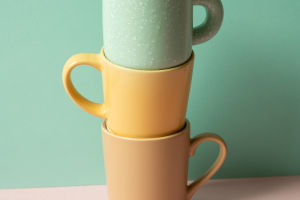Hair Brushing Mistakes
Hair brushing, a seemingly simple daily routine, can actually become a major contributor to hair loss if not done correctly. Many people are unaware that certain habits and techniques can damage their hair over time, leading to significant thinning and breakage.
Here are some common hair-brushing mistakes you may be committing that you don't even realize. By understanding these common mistakes, you can take proactive steps to maintain healthy, luxurious hair.
Trap 1: Using the Wrong Comb
One of the most common mistakes is using the wrong type of brush for your hair type. Brushes come in various shapes, sizes, and bristle types, each designed for specific hair needs. For instance, using a brush with stiff, plastic bristles on fine hair can cause excessive pulling and breakage. On the other hand, using a brush with too soft bristles on thick, curly hair might not adequately detangle it, leading to knots and split ends.
Trap 2: Brushing Wet Hair
Wet hair is more susceptible to damage than dry hair due to its increased elasticity. Hair is vulnerable when it is wet, brushing it aggressively can lead to severe breakage. Many people make the mistake of brushing their hair immediately after showering, believing it will help detangle and smoothen out the strands. However, this can cause more harm than good.
So, avoid brushing your hair when it's soaking wet. Instead, gently towel-dry your hair to remove excess moisture and allow it to air dry partially before brushing. If you must detangle wet hair, use a wide-toothed comb or a brush specifically designed for wet hair, such as a detangling brush with flexible bristles that can move with your hair's natural texture.
Trap 3: Brushing Too Vigorously
Another significant trap is brushing hair too vigorously. Many individuals believe that the more force they apply while brushing, the better the results will be. Unfortunately, this is far from the truth. Brushing with excessive force can weaken hair strands, lead to breakage, and ultimately contribute to hair loss. It can also irritate the scalp, causing inflammation and even more hair fall.
Trap 4: Over-Brushing
While it might seem counterintuitive, over-brushing your hair can be just as harmful as not brushing it enough. Excessive brushing would wear down the cuticle (the outermost layer of the hair shaft), making the hair more susceptible to damage and breakage. It also strips away natural oils that protect and nourish the hair, leaving it dry and brittle.
Trap 5: Ignoring Scalp Health
Healthy hair starts with a healthy scalp. Neglecting scalp care can lead to a range of issues, including dandruff, oil buildup, and weakened hair follicles. Many people focus solely on their hair strands and forget that the scalp plays a crucial role in overall hair health. Ignoring scalp health will exacerbate hair loss and prevent new, healthy hair from growing.
To promote scalp health, incorporate regular scalp massages into your routine. This helps stimulate blood circulation, which can encourage hair growth and strengthen hair follicles. Additionally, ensure your hairbrush is clean and free from dirt and product buildup, as a dirty brush can transfer impurities to your scalp. Consider using a scalp scrub or exfoliating treatment once a week to remove dead skin cells and maintain a healthy scalp environment.
The way you brush your hair can significantly impact its overall health and appearance. By avoiding these common hair brushing traps—using the wrong brush, brushing wet hair, brushing too vigorously, over-brushing, and neglecting scalp health—you can prevent unnecessary hair loss and damage.


